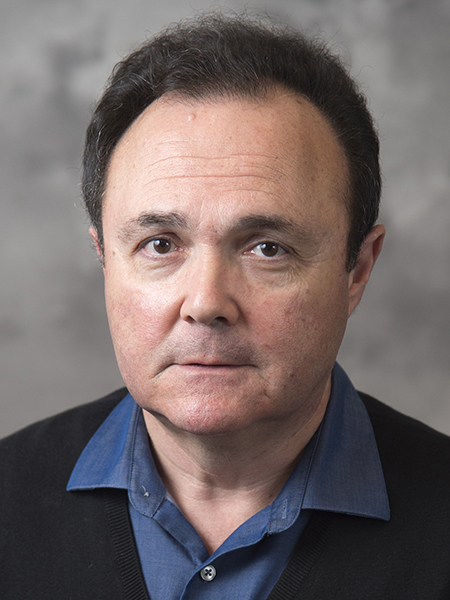Purdue ECE collaborates on MURI award on topological plasma structures for control of electromagnetic interactions

In collaboration with two universities, Purdue University was awarded a Multidisciplinary University Research Initiative (MURI) award from the U.S. Department of Defense (DoD) to develop a fundamental understanding of topological systems incorporating plasma elements.
Three professors from the Purdue Elmore Family School of Electrical and Computer Engineering are co-PIs: Dimitrios Peroulis, Michael and Katherine Birck Head of Electrical and Computer Engineering and Reilly Professor of Electrical and Computer Engineering; Vladimir Shalaev, Bob and Anne Burnett Distinguished Professor of ECE; and Alexander Kildishev, an associate professor of ECE, along with Sergey Macheret, professor in Purdue’s School of Aeronautics and Astronautics. In addition to the Purdue researchers, the project includes researchers from Massachusetts Institute of Technology and University of Pennsylvania.
The team was awarded $2.5 million for three years by the Air Force Office of Scientific Research. Purdue’s share is $1.9 million. Only one other research team, headed by Stanford University, was awarded a MURI grant in this topic area.
The grant is for “topological plasma structures for control of electromagnetic interactions.” Based on novel principles of plasma tuning and control and multiphysics modeling and inverse design, the group will study and develop systems that would offer unique ways to manipulate electromagnetic interactions, enhancing DoD capabilities.
Electronic warfare are military activities that use electromagnetic energy to control the electromagnetic spectrum and attack an enemy, according to the DoD. The spectrum is a range of frequencies for electromagnetic energy that includes radio frequencies, microwaves for tactical data-links, radars and satellite communications, infrared and lasers.
The MURI effort will combine innovative plasma science and technology with electromagnetics and topological photonics and will result in unprecedented ability to control and manipulate electromagnetic interactions. In addition to generating scientific breakthroughs, the MURI effort will provide funding for education and training of PhD students.
Both plasma (ionized gas) and metamaterials or photonic structures can be used to control and manipulate electromagnetic waves, and the MURI collaboration will include overlap between plasmas and metamaterials, marrying the two areas together to “synergistically get something that is impossible to get separately,” Macheret said.
“By manipulating the properties of the plasma in magnetic field, you’ll acquire totally new functionality. We would manipulate electromagnetic ways in a very interesting way,” Macheret said. “For example, there are so-called non-reciprocal structures where electromagnetic waves can propagate only forward but not backward, etc. So we would acquire some ability to manipulate electromagnetic properties on an unprecedented scale, in an unprecedented way.”

A key thrust of the effort, led by Macheret, will be in plasma generation and on-demand control, in order to develop a fundamental understanding and innovative techniques to vary the electromagnetic properties of plasma discharges. The focus will be on magnetized plasmas that will have anisotropic properties.
“Plasmas would provide some very flexible and tunable and interesting properties, which is when you include them into those metamaterial or photonic structures would produce some new functionality, new ways of manipulating electromagnetic waves,” Macheret said.
Shalaev and Peroulis will work on time-varying topologically protected photonic crystals. They will realize the emerging concept of a photonic time crystal (PTC) based on time-varying metamaterials (Shalaev) and a plasma cell array (Peroulis). The main goal is to use such topologically protected states to control electromagnetic waves in the optical and RF spectral ranges.
“This is an unprecedented opportunity where people from different disciplines and with diverse approaches will create new ways of controlling electromagnetic energy,” Peroulis said.
Kildishev will collaborate with other team members and will develop data- and physics-driven optimization of plasma-enabled topological elements and systems.
Marin Soljacic (MIT) will study novel effects with linear plasma behavior, for example, and analog of quantum anomalous hall effect in magneto-plasmas and Weyl-point plasma metamaterials. Bo Zhen (University of Pennsylvania) will conduct studies of topological physics effects on interaction between plasma and electromagnetic waves.
The interdisciplinary team effort could result in scientific advances as well as in practical future systems for manipulation of electromagnetic interactions.
